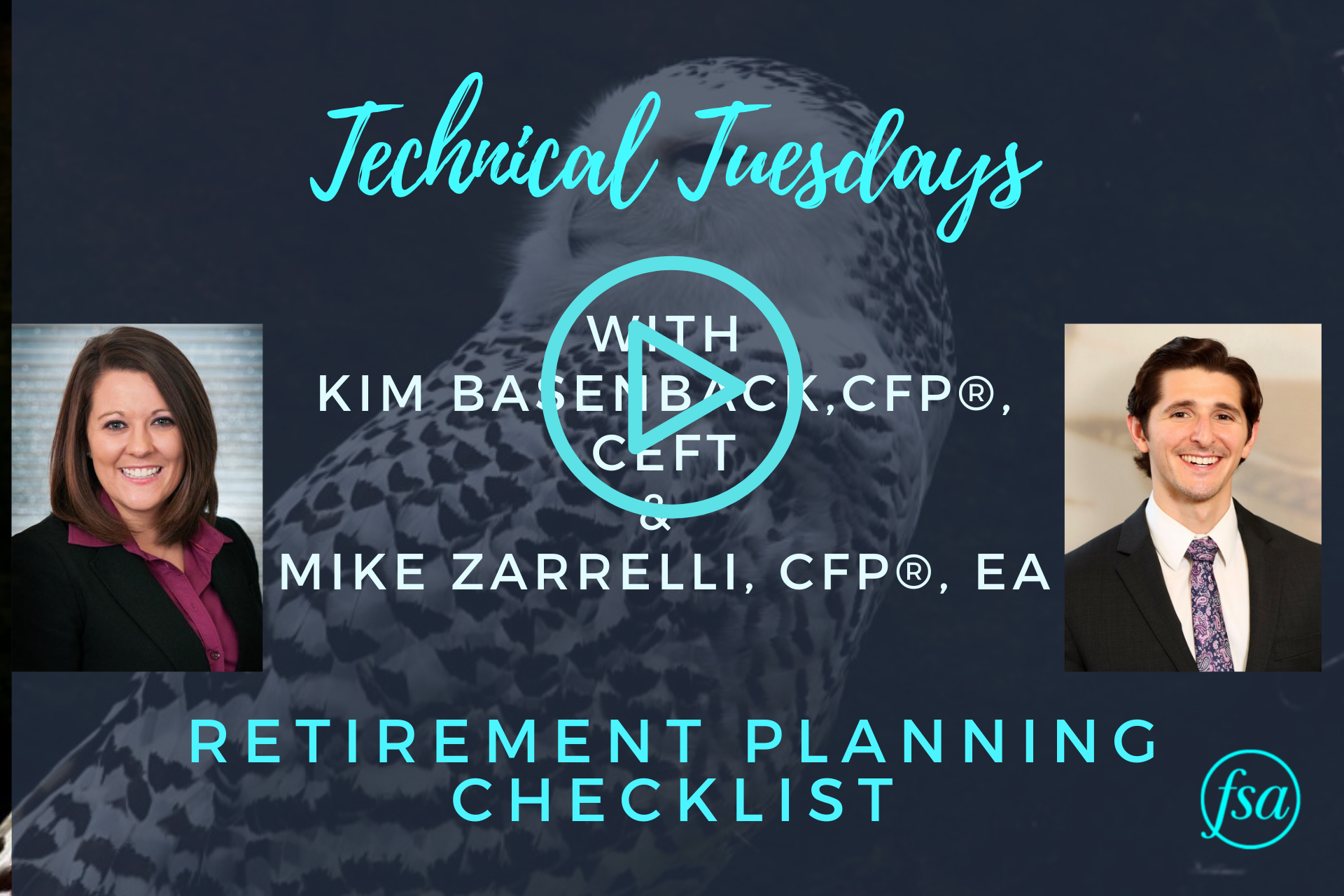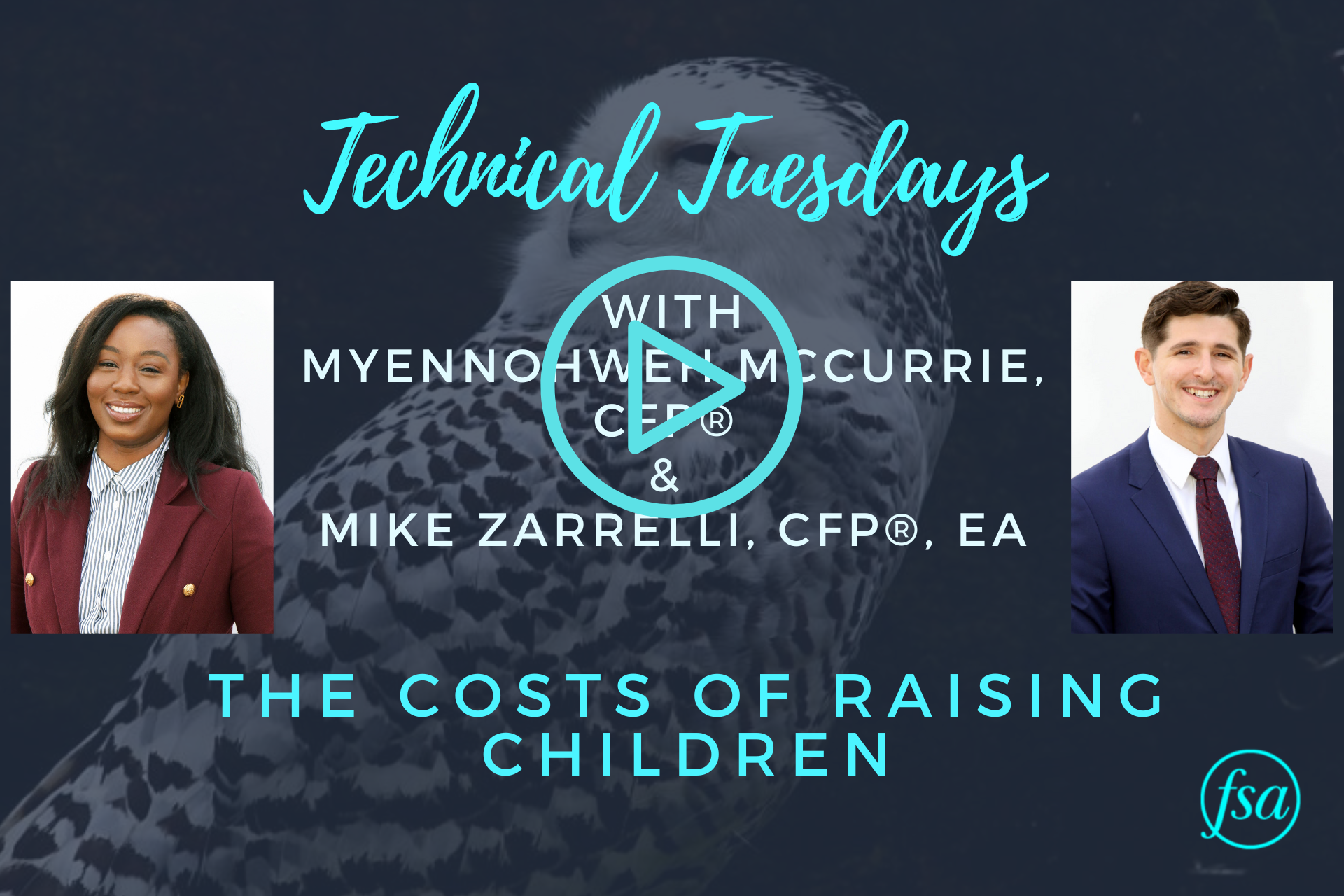Aaron Weston, CPF®, and Mike Zarrelli, CFP®, EA, discuss the Federal Reserve and what it does.
Fed Talk Transcript
Mike:
Hey, everyone. Thanks for joining us for this month’s Technical Tuesday. I’m Mike Zarrelli.
Aaron:
And I’m Aaron Weston.
Mike:
We’re filming right after the Federal Open Market Committee meeting, so we thought what a better topic to cover than the Federal Reserve, AKA the Fed. With that, let’s dive right in. Aaron, tell us about the Fed and what they do.
Aaron:
Yeah, Mike. So the Federal Reserve’s main duties revolve around monetary policy. And what that means is they’re in charge of stimulating, maintaining, or slowing the economy when necessary. And one of the tools they have in their arsenal is the Fed funds rate. The Fed funds rate is basically the short-term borrowing rate between banks and the Fed. Now, one thing that’s noteworthy, is it’s been said the Fed is in charge of ensuring price stability as well as maximum employment. Now, I know that sounds contradictory right now as we’re in an environment where the Fed is trying to bring down inflation, and one of the things that they’re looking at as well as inflation is the unemployment rate. Now, they don’t want the unemployment rate to be too low because that would mean the economy is moving a little too rapidly and would hinder the ability to bring inflation down. So again, I know that sounds contradictory to maximum employment, but that’s one of the things the Fed is looking at, as well as inflation, is the unemployment rate.
Mike:
Yeah, absolutely. And recently inflation’s been on the downtrend, but it’s been a little bit stickier than I think a lot of us were expecting. So earlier this week you were telling me about the interest rate dot plot, which I found really interesting. Can you tell us about it and what you can learn from looking at this dot plot?
Aaron:
Yeah, Mike, the Federal Reserve system, it’s actually comprised of seven Fed governors as well as twelve regional bank presidents. Now, the head of the Fed is Jay Powell; I’m sure you’ve heard that name. But Jay Powell, along with these 18 other representatives, ultimately what they’re doing is placing a dot indicating where they believe the Fed funds rate should be in the coming years, hence the phrase the dot plot. Now what you’re looking at here is from December of 2023, and it shows the next few years of where the Fed and their beliefs in where the Fed rates should be. And you can see it is trending down. So we’ve been in a rising interest rate environment. It’s maintained for the recent last six months or so. And you can see that the Fed believes the Fed funds rate should start to come down.
Mike:
Right. As you said, the consensus is that these interest rates will come down in the near future. My question for you is, if the Federal Reserve does in fact start cutting rates, how would that impact consumer interest rates?
Aaron:
Yeah, good question, Mike. So, the Fed ultimately can do three things with the Fed funds rate. They can raise rates, which they had been doing. They could keep rates the same. Or they can lower rates. Now, when the Fed starts to lower rates, what they’re doing is trying to stimulate the economy. Now why would they do that? Ultimately, they’re trying to get a good balance of inflation coming down as well as the economy continuing to grow.
The target was said to be around two and a half percent in terms of inflation, and once inflation starts to come down, they don’t want the economy to go into a tailspin and we all of a sudden have a recession, so they’ll start to cut rates. And what that means in terms of why they would cut rates is they’re trying to induce borrowing. When it becomes cheaper to borrow, businesses, individuals, they have a better ability to get the funds necessary to grow their businesses. It just makes it easier for them to borrow, to put capital back into the system, and that’s why the Fed would lower rates to try to keep the economy growing at a steady pace.
Mike:
Yep, totally makes sense. Just to add a personal antidote there, I bought a house in 2022, and that’s, of course, when interest rates were on the rise, and we locked in about a 5% mortgage rate. And at the time I thought, “Man, that is a heavy rate. My brother’s got a 3% mortgage.” Well, now that interest rates for mortgages are around 7- 8%, I’ll take my 5.
So with the Federal Reserve and their interest rate moves, is this something that clients should be paying attention to?
Aaron:
Yeah, that’s a good question, Mike. And my answer, I don’t really like this answer, but it’s yes and no. So the yes is, yeah, it makes sense to keep track of this, what’s going on in the economy, what’s going on in the country. It’s something that you can talk about over dinner or with your coworkers. And it’s not quite political, so it’s something that could be tolerated I would imagine.
The other side, no, is, well, that’s what we’re doing. We’re keeping track of it. Our team’s keeping track of not only what the Fed is doing in terms of raising, maintaining, or lowering rates but what the impact is to the stock and bond market. Now, we’re not in the business of trying to predict what the Fed’s going to do. We’re not in the business of trying to predict what the impact of the stock market is going to be. But what we’re going to do is what we’ve done for over 40 years, which is react accordingly. So right now the economy’s humming, the stock market’s humming, so we’re going to try to capture some of that, but if that changes, obviously, we’ll adjust accordingly. So, yes, keep a good mind to it so that you can talk about it, but no, we got you covered. That’s our job.
Mike:
Yep, absolutely agree. Our job as financial advisors is to take all this noise, boil it down to what’s actually important for our clients and how it’s going to impact their goals, and then make smart decisions knowing that information.
Well, that’s all for this Technical Tuesdays. If you have any questions, feel free to reach out. Otherwise, we’ll catch you in the next video. Thanks.
FSA’s current written Disclosure Brochure and Privacy Notice discussing our current advisory services and fees is available at www.FSAinvest.com/disclosures or by calling 301-949-7300.




